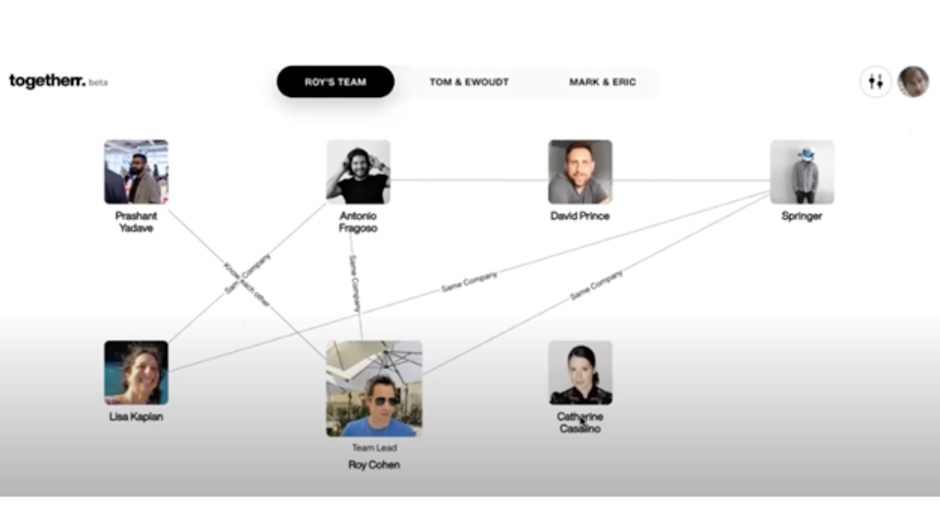By Anil Gupta
Artificial intelligence and machine learning are among the top marketing buzzwords we come across in the field of digital marketing. These technologies have already become an integral part of digital marketing and are being leveraged to make campaigns more personable and efficient.
For instance, artificial intelligence can make personalization easy and quick by creating accurate buyer personas. These personas are auto-generated to deliver a holistic audience segmentation, thereby improving the effectiveness of the campaigns. In addition, Netflix, Google, Uber, Spotify, Pinterest, and other apps use machine learning to personalize individual accounts and make relevant recommendations to their users.
The ever-improving algorithms and the exponential growth of data are encouraging business leaders and marketers to use AI, in the form of machine learning, natural language processing (NLP), deep learning, and other technologies. These technologies are helping them improve customer experience and conversions.
A Gartner survey shows that 37% of organizations are applying AI in some form or the other to boost their digital performance.
This post highlights how AI and ML are proving to be game-changers in the digital marketing realm.
1. Offer a Better Understanding of the Audience
Great content starts with knowing the audience well. When a business knows its target audience, the connection feels more natural and relevant. That genuine connection goes a long way in building lasting relationships with customers.
In recent years, AI and ML have opened up a whole new world of possibilities for understanding audience behavior. AI tools and data-driven insights are helping businesses understand who they are reaching, what the customers want and need, when to communicate, and where to reach them.
Artificial intelligence helps marketers instantly define buyer personas. Then, platforms like Socialbakers auto-generate these personas to deliver more holistic audience segmentation in the form of actionable insights. These insights help content marketers share inspiring stories that convert.
Keeping your audience at the centre of your online strategies is critical to business success. AI can help by offering unique audience insights, enabling businesses to deliver an integrated brand experience through relevant content. It also helps in selecting the most trustworthy and effective influencers for the brand.
2. Help with Lead Management
Big data, predictive analytics, and machine learning are being increasingly used in business intelligence these days. Machine learning, with its ability to bring out valuable hidden insights from large data sets, can create tangible value for businesses.
Leads are the driving force for businesses. They are the ones who will soon contribute to the organizational revenue. Hence, business leaders spend a significant amount of time in lead management. ML can be leveraged to improve and scale a firm’s approach to lead management, thereby boosting the bottom line. It helps firms generate better leads, qualify and nurture them, and ultimately monetize them effectively.
For instance, ML can help you create an ideal customer profile (ICP) to reach the best customers. ICP takes a structured look at the demographics and psychographics of an individual and determines their purchase intent and the content that matters to them. Thus, ICP can be used for lead scoring, allowing marketers to prioritize targeted accounts.
ML can also help firms generate more qualified leads from the traffic already coming to the site. For example, check out how Drift, a revenue acceleration platform, uses conversational AI to recognize quality from noise, learn from the conversations, and automatically qualify or disqualify website visitors. These qualifiers help the sales team focus on leads that are ready for conversions.
3. Curate and Create Better Content
AI is changing the game for content marketers. The technology is being used to automatically generate content for simple stories like sports news or stock market updates. AI also allows social channels to customize user new feeds.
But one content field where AI is increasingly applied is content curation. AI algorithms make it easier to collect target audience data to create relevant content at each stage of the marketing funnel.
For instance, the algorithms collect data on what the audience prefers to read, the questions they want answers to, or any specific concerns. Using this data, content marketers can curate and create relevant content that boosts customer experience and ultimately leads to conversions.
The North Face uses an AI-powered technology like IBM Watson that recreates shopping experiences. The AI tool uses cognitive computing that brings the online and in-store experiences closer together.

Besides, machine learning feeds content strategies by discovering fresh research-based content ideas, identifying the top-performing topic clusters, showing the most relevant keywords in a specific niche.
For instance, Google Analytics and SEMrush operate on machine-learning algorithms that are useful in keyword research and discovery, and content distribution. In addition, these tools can discover industry trends and show you ways to rank higher in SERP.
AI and ML-enabled tools improve the overall reception and performance of online content. In addition, the tools allow marketers to offer relevant and personalized digital experiences that positively influence engagement.
4. Help with Competitive Search Engine Ranking
Search engines are already using AI-enabled algorithms to deliver the most relevant SERP results. These algorithms rely on AI to understand the context of the content and spot irrelevant keywords. No wonder SEOs are constantly striving to understand these algorithms and coming up with strategies to create contextual, conceptual, and accurate content.
The placement of your business in the SERPs can make or break your online reputation and performance. AI technologies make it easier to create compelling content that answers the target audience’s queries, keywords, and phrases.
SEO isn’t a day’s job. It’s challenging, and the results of one’s efforts can only be seen after months. Fortunately, AI-based SEO tools help alleviate this stress. SEO optimization tools like Moz, WooRank, BrightEdge, and MarketMuse heavily rely on AI to offer SEO solutions like:
- Keyword research
- Search terms to make the content more relevant
- Link-building opportunities
- Trending topics
- Optimum content length
- User intent and more.
Tools like Alli AI can instantly optimize your website regardless of the CMS and your web development expertise. The platform performs a site-wide content and SEO audit, automatically optimizes the content, and resolves duplicate content issues. All this makes it easier for content creators to avoid poor-performing content and boost their online ranking.
5. Improve Page Speed
Google has put an exact value on fast user experience by including page speed as one of its ranking signals. That’s why boosting page speed is one of the top priorities for all businesses, especially ecommerce firms. As a result, Webmasters take all sorts of measures to improve page speed.
For instance, WordPress site owners may speed up WordPress by optimizing background processes, keeping the WP site updated, using a content delivery network (CDN), or using faster plugins. Of course, they also use various tools like Page Speed Insights, load time testers, and CMS plugins for the purpose. But now, there’s another ML-powered solution available for boosting the page speed – the Page Forecasting Model.
This model predicts user behaviour using machine learning and predicts the next page visitors will click on in real-time. This allows Webmasters to preload the page in the background, thus improving the overall experience.
The algorithm is trained with historical data from Google Analytics.
For instance, user patterns like going from home page to category page or product page to the shopping cart are recognized, understood, and included in update algorithms. If the user behaves similarly, the algorithm is automatically prepared with the next page.
However, the prediction accuracy is dependent on the amount of data available to train the algorithm and the website structure. So, the models will vary according to these factors. For instance, if yours is an ecommerce website that combines industry news with product pages, it’s better to use two or more models that can predict the behaviour per section.
6. Automate Website Analytics Process
Web analytics isn’t new. Businesses have been assessing user behaviour and tracking key performance metrics since the mid-’90s. But thanks to AI and machine learning, web analytics tools now have robust capabilities that allow businesses to automate the process. These tools can offer auto-generated reports and on-demand insights that feed marketing strategies.
Within a single visit to a webpage, each user generates hundreds of data points like the time spent on a page, the browser details, its location, and others. It is practically impossible to analyse all this data manually. AI and ML make such analysis faster and accurate by speeding up the data processing.
AI-based tools can help you track each visitor’s online behaviour, understand user journeys, and how customers move through the marketing funnel. They also point out issues, if any.
Let’s say you have a blog post that gets a lot of traffic, but visitors just read the post and leave without taking action like subscribing to your newsletter or sharing your post on social media. AI-based tools can flag such issues, allowing you to take the necessary corrective action like adding internal links or improving your CTA.
Google Analytics (insights section), Adobe Analytics, and Kissmetrics are among the top web analytics tools that help firms see patterns in customer behaviour and predict future trends.
7. Improve Site Navigation
Site navigation is another critical area in digital performance where AI and ML can help is site navigation. Though it may sound negligible, the importance of having organized and easy-to-follow navigation cannot be ignored. Well-planned navigation improves the visit duration, reduces the bounce rate, and boosts user experience. It also enhances the overall aesthetic appeal of the website design.
AI can help Webmasters create a user-friendly website structure that’s easy to navigate. AI-powered chatbots can guide users through the pages and help them find what they are looking for within the first few clicks. This significantly improves the user experience and sends good signals to search engines, indicating that your content is useful and relevant.
Thus, Google and other search engines will rank your page higher than any other website offering similar content.
8. Design Better Websites
AI applications can improve the usability and experience of a website by enhancing the site’s appearance, strengthening its search abilities, managing inventory better, and improving interaction with website visitors. No wonder a growing number of designers and developers are moving towards AI-based design practices.
AI is slowly becoming an indispensable part of modern web design and development. Take the field of artificial design intelligence (ADI) systems, for instance. ADI has triggered a sudden shift in the way web designing is done. It allows designers to combine applications into the website for better user experience and functionality.
Check out The Grid website platform that automatically adapts its design to highlight the content. The platform uses ML and constraint-based design and flow-based programming to dynamically adapt the website design to the content.
Today, we have several entrants in this space that are taking AI in web design to a whole new level. Brands like Adobe, Firedrop, Bookmark, Wix, Tailor Brands, and many others are leading the segment and leveraging the capabilities of AI in web design. In addition, most of these ADI platforms can learn and offer suggestions for optimizing the website for better user experience and SEO performance.
The Way Forward
Artificial intelligence and machine learning are proving to be awesome technologies when it comes to improving a firm’s digital performance. However, it is essential to remember that these ML models are only as good as the data that’s used to train them. Therefore, it’s critical to ensure that your marketing team has access to high-quality and accurate data.
So, before applying these technologies to your digital efforts, there are specific steps that you need to take.
- Set up tags to track and capture on-site user behaviour.
- House all the data from different sources in one central place like Google BigQuery, a Big Data analytics platform.
- Invest in data deduplication to eliminate duplicate copies of repeating data from multiple sources.
Once your data is in place, you will be in a great position to start deploying AI and ML for boosting your digital performance. In addition, the information shared above will prove to be useful as you start building machine learning solutions for improving your business’s online presence.
Anil is the CEO & Co-Founder of Multidots, one of the top WordPress development agencies on the planet. He is a technopreneur with over 13 years of experience coding, thinking, and leading the business with mind and people with heart. He and his team are seasoned in delivering secure and feature-reach WordPress services for businesses big and small.





















